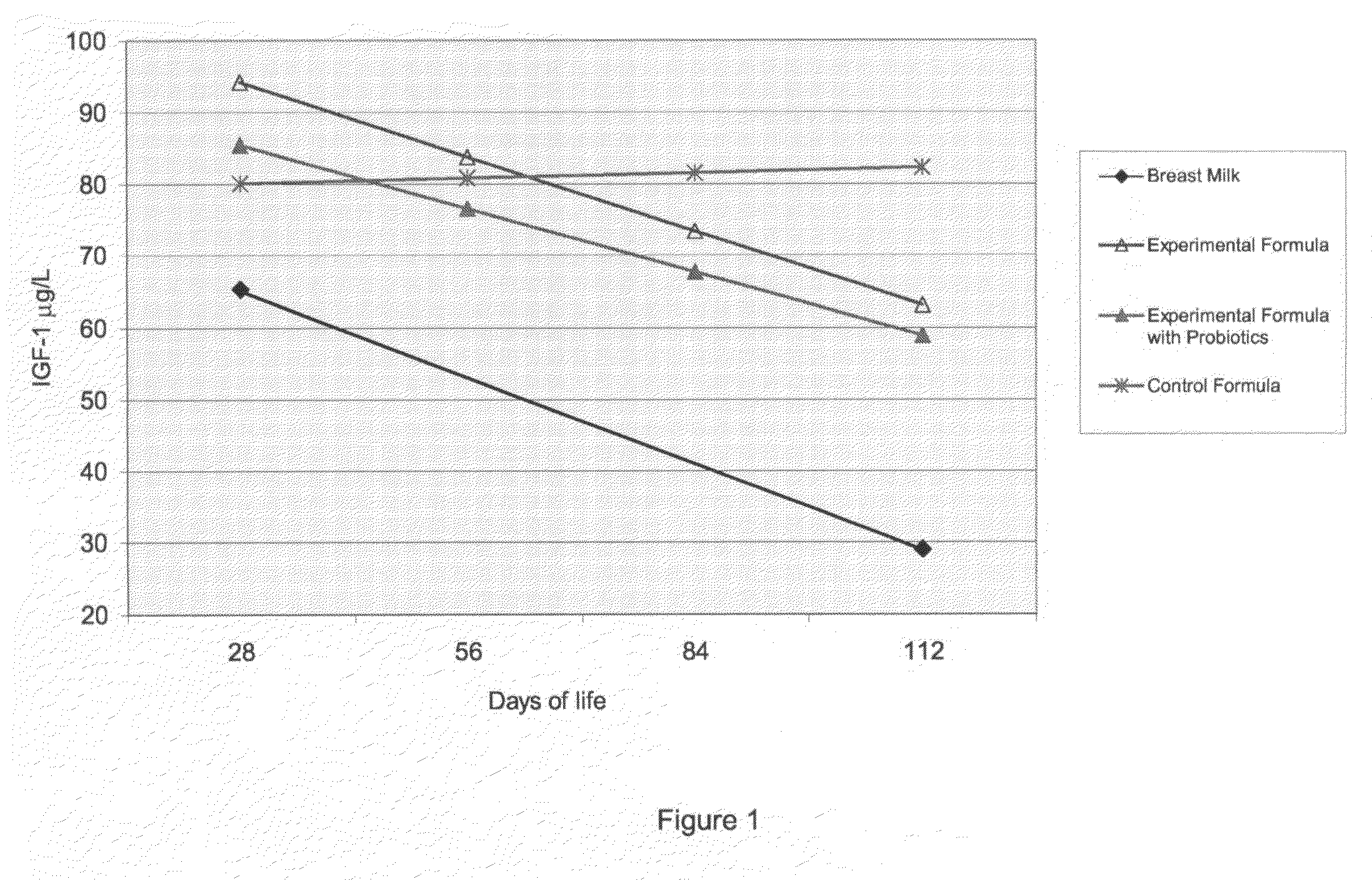Use of infant formula with reduced protein content
a technology of infant formula and protein content, which is applied in the direction of peptide/protein ingredients, drug compositions, metabolic disorders, etc., can solve the problems of inability to fully absorb infant formula, so as to reduce the risk of obesity, reduce the risk of developing obesity, and reduce the circulating level of insulin
- Summary
- Abstract
- Description
- Claims
- Application Information
AI Technical Summary
Benefits of technology
Problems solved by technology
Method used
Image
Examples
example
Influence of Protein Content on Plasma IGF-1 Levels in the First Four Months of Life
[0035]This example demonstrates the effect of the protein content of an infant formula used as the sole source of nutrition for a group of infants for the first four months of their life on their plasma IGF-1 levels.
[0036]A prospective, randomized, controlled, blinded study of three groups in parallel was carried out at the University of Iowa (Lora N. Thomas Metabolism Ward) and at its annex in Cedar Rapids, Iowa in accordance with the principles established in the 1964 Declaration of Helsinki (as amended) and with the approval of the University of Iowa Committee on Research Involving Human Subjects. Infants whose mothers had decided not to breast feed were recruited at the maternity units of two hospitals in Iowa City and two in Cedar Rapids and randomly assigned to one of three groups. The control group was fed a partially hydrolysed infant formula with a protein content of 2.39 g / 100 kcal availabl...
PUM
| Property | Measurement | Unit |
|---|---|---|
| temperature | aaaaa | aaaaa |
| weight | aaaaa | aaaaa |
| composition | aaaaa | aaaaa |
Abstract
Description
Claims
Application Information
 Login to View More
Login to View More - R&D
- Intellectual Property
- Life Sciences
- Materials
- Tech Scout
- Unparalleled Data Quality
- Higher Quality Content
- 60% Fewer Hallucinations
Browse by: Latest US Patents, China's latest patents, Technical Efficacy Thesaurus, Application Domain, Technology Topic, Popular Technical Reports.
© 2025 PatSnap. All rights reserved.Legal|Privacy policy|Modern Slavery Act Transparency Statement|Sitemap|About US| Contact US: help@patsnap.com

